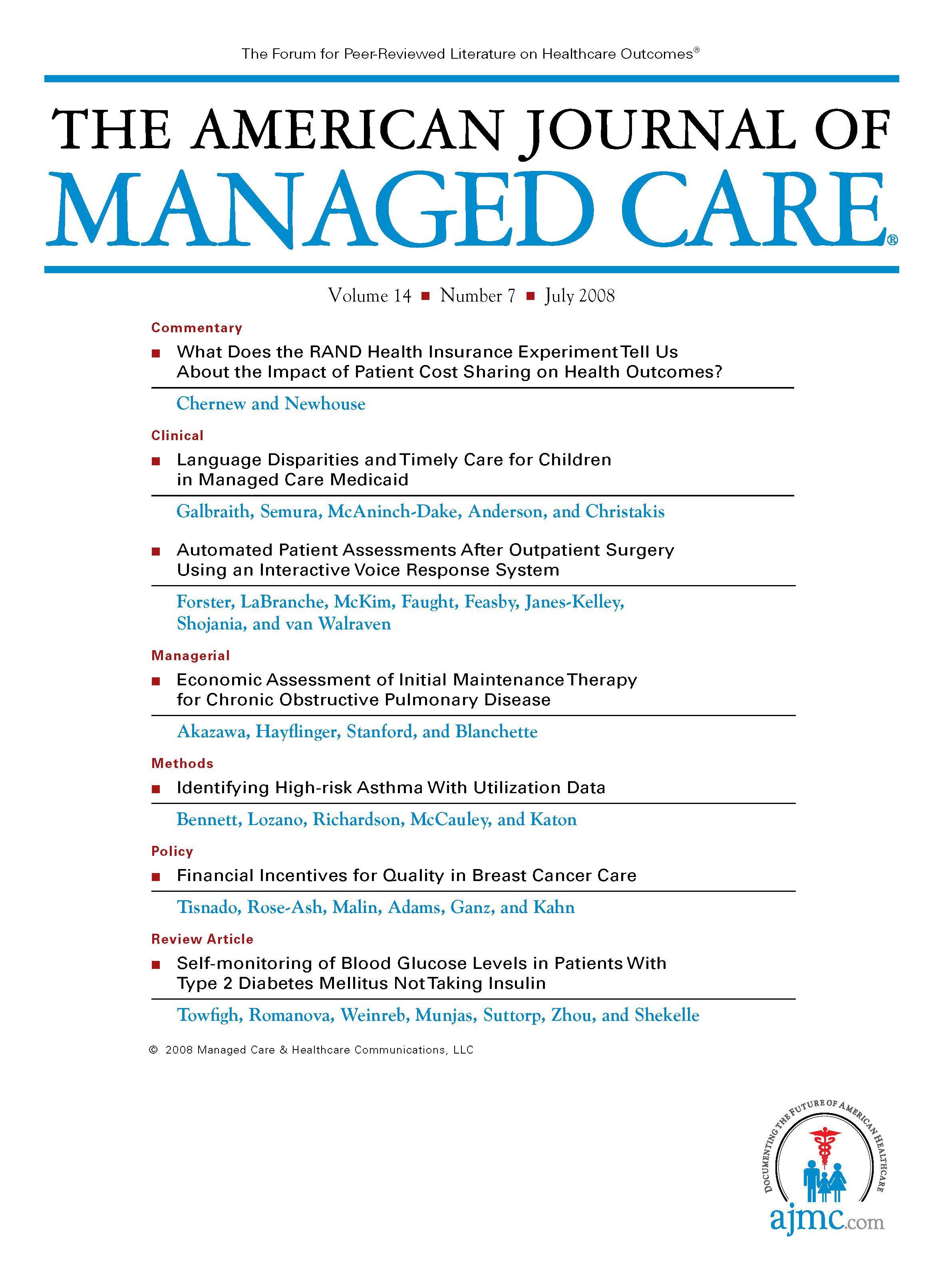- Center on Health Equity & Access
- Clinical
- Health Care Cost
- Health Care Delivery
- Insurance
- Policy
- Technology
- Value-Based Care
Correspondence regarding childhod obesity
TO THE EDITORS
Clinicians working in healthcare systems have an important role in early detection and management of overweight in their patients. Systematic assessment of childhood overweight is needed to determine a population baseline level of overweight and to clinically identify patients needing further evaluation and treatment.1,2 At Kaiser Permanente, Northwest Region, electronic data systems and an electronic medical record have allowed us to obtain overweight prevalence data in a defined population of enrolled pediatric health plan members. We are not aware of similar data from other healthcare systems that provide comprehensive care for a defined population of children.
Kaiser Permanente, Northwest Region is an integrated, not-for-profit healthcare system in the Portland, Oregon, and Vancouver, Washington, metropolitan areas. The plan insures approximately 17% of the metropolitan population, and the membership has demographic characteristics similar to those of the surrounding area. Pediatric care is provided in 15 medical offices by 64 pediatricians, 84 family practitioners, and 56 nurse practitioners or physician assistants.
The Kaiser Permanente electronic medical record (Epic Systems, Madison, Wis) presents body mass index (BMI) as a data field when height and weight have been entered during a clinic visit. A computer algorithm provided by the Centers for Disease Control and Prevention converts age, gender, height, and weight to a BMI-for-age (BMIFA) percentile when height and weight data are available simultaneously within the last year.3 "Overweight" is defined as a BMIFA percentile greater than 95 and "at risk for overweight" is defined as a BMIFA percentile between 85 and 95.
During the past year, 41.9% (38 135 of 90 940) of enrolled pediatric members aged 2-17 years had sufficient data recorded to calculate the BMIFA percentile. An additional 20.5% of children had weight, but not height, recorded. The prevalence of overweight in the pediatric population with sufficient data to calculate the BMIFA percentile is 17.3%, and 16.4% of the population is at risk for overweight. The prevalence of childhood overweight increases from 11.2% at age 2-5 years to 19.8% in children aged 6-11 years and is 18.6% at age 12-18 years. The prevalence of overweight is 19.1% in boys and 15.4% in girls.
The prevalence of childhood overweight in our population is similar to that reported in national samples.4 However, prevalence of overweight in 12-17-year-olds measured at the time of clinical care in our population is approximately 2-fold higher than self-reported measurements of teenagers in our geographic area.5 This finding indicates the critical need to rely on measured, rather than self-reported, data for population overweight assessment. Training clinicians and medical office staff to perform BMIFA assessments as a component of quality of care has been useful to improve measurement rates, although further work is needed. In particular, although an electronic medical record successfully captured the BMIFA in 42% of our population of pediatric health plan members, population BMIFA capture rates could be increased significantly if heights were measured and recorded consistently at the time of clinical care.
The high prevalence of overweight children in our population and nationally indicates a need for coordinated systematic strategies to detect and manage pediatric overweight and to prevent excess weight gain.
Keith H. Bachman, MD
Northwest Permanente
Michael K. Nash, BS
Portland, Oregon
1. US Department of Health and Human Services, Office of Disease Prevention and Health Promotion. Healthy people 2010. Available at: http://www.healthypeople.gov/Document/html/uih/uih_bw/uih_4.htm. Accessed January 15, 2005.
Pediatrics
2. Krebs NF, Jacobson MS, American Academy of Pediatrics Committee on Nutrition. Prevention of pediatric overweight and obesity. . 2003;112:424-430.
3. National Center for Health Statistics. National Health and Nutrition Examination Survey. 2000 CDC growth charts: United States. Available at: http://www.cdc.gov/growthcharts. Accessed January 15, 2005.
JAMA
4. Hedley AA, Ogden CL, Johnson CL, Carroll MD, Curtin LR, Flegal KM. Prevalence of overweight and obesity among US children, adolescents, and adults,1999-2002. . 2004;291:2847-2850.
5. Oregon Department of Human Services, Center for Health Statistics and Vital Records. Oregon healthy teens data 1997-2005. Available at:http://www.dhs.state.or.us/publichealth/chs/yrbsdata.cfm. Accessed January 15, 2005.

From MSSP ACOs to Employer Value: Translating Value-Based Principles to Self-Insured Plans
December 12th 2025Value-based care adoption in employer insurance requires replacing fragmented point solutions with unified, at-risk performance contracts that align vendors, providers, and members around total cost and quality goals.
Read More
Legal Issues in Value-Based Care Contracts for Self-Insured Employers
December 12th 2025Self-insured employers face regulatory challenges when adopting value-based contracts, requiring careful data governance, standardized metrics, and legal frameworks to align with federal value-based care models.
Read More
From Complexity to Clarity: A Path to Value in Employer Health Plans
December 12th 2025Employers struggle to define value from health care spending amid complexity and misaligned incentives. Achieving measurable outcomes requires transparency, incentive realignment, and gradual, employee-centered change.
Read More
Advancing Early Detection and Equitable Access in Alzheimer Disease Care
December 11th 2025Experts at a roundtable in Boston, Massachusetts, on November 3, 2025, discussed improving early Alzheimer disease diagnosis, addressing workforce and equity gaps, and expanding access to new disease-modifying therapies.
Read More

